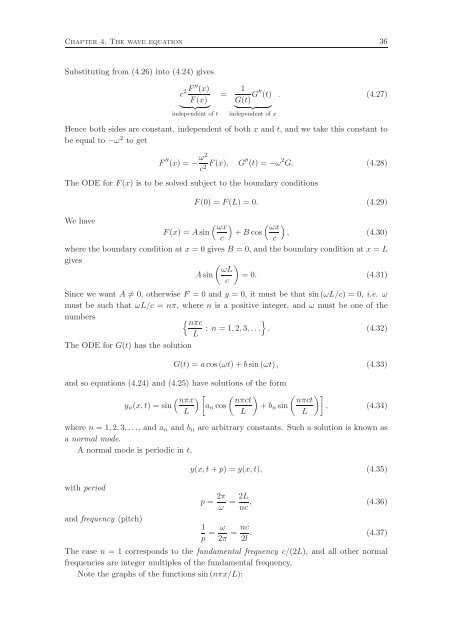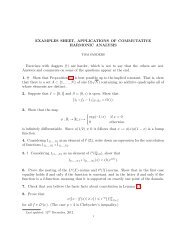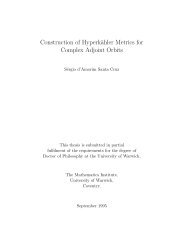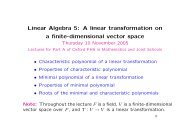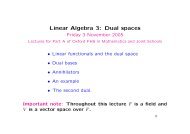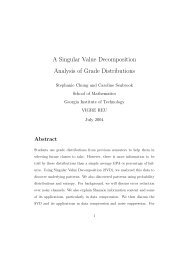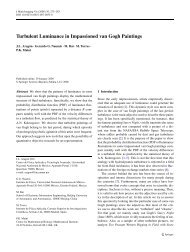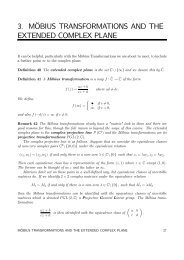Fourier Series and Partial Differential Equations Lecture Notes
Fourier Series and Partial Differential Equations Lecture Notes
Fourier Series and Partial Differential Equations Lecture Notes
Create successful ePaper yourself
Turn your PDF publications into a flip-book with our unique Google optimized e-Paper software.
Chapter 4. The wave equation 36<br />
Substituting from (4.26) into (4.24) gives<br />
c 2F′′ (x)<br />
F(x)<br />
<br />
1<br />
=<br />
G(t)<br />
independent of t<br />
G′′ (t) .<br />
<br />
(4.27)<br />
independent of x<br />
Hence both sides are constant, independent of both x <strong>and</strong> t, <strong>and</strong> we take this constant to<br />
be equal to −ω 2 to get<br />
F ′′ (x) = − ω2<br />
c 2 F(x), G′′ (t) = −ω 2 G. (4.28)<br />
The ODE for F(x) is to be solved subject to the boundary conditions<br />
F(0) = F(L) = 0. (4.29)<br />
We have<br />
<br />
ωx<br />
<br />
ωx<br />
<br />
F(x) = Asin +Bcos ,<br />
c c<br />
(4.30)<br />
where the boundary condition at x = 0 gives B = 0, <strong>and</strong> the boundary condition at x = L<br />
gives<br />
<br />
ωL<br />
Asin = 0.<br />
c<br />
(4.31)<br />
Since we want A = 0, otherwise F = 0 <strong>and</strong> y = 0, it must be that sin(ωL/c) = 0, i.e. ω<br />
must be such that ωL/c = nπ, where n is a positive integer, <strong>and</strong> ω must be one of the<br />
numbers <br />
nπc<br />
L<br />
The ODE for G(t) has the solution<br />
<br />
: n = 1,2,3,... . (4.32)<br />
G(t) = acos(ωt)+bsin(ωt), (4.33)<br />
<strong>and</strong> so equations (4.24) <strong>and</strong> (4.25) have solutions of the form<br />
<br />
nπx<br />
<br />
yn(x,t) = sin<br />
L<br />
<br />
nπct nπct<br />
ancos +bnsin , (4.34)<br />
L L<br />
where n = 1,2,3,..., <strong>and</strong> an <strong>and</strong> bn are arbitrary constants. Such a solution is known as<br />
a normal mode.<br />
A normal mode is periodic in t,<br />
with period<br />
<strong>and</strong> frequency (pitch)<br />
y(x,t+p) = y(x,t), (4.35)<br />
p = 2π<br />
ω<br />
1 ω<br />
=<br />
p 2π<br />
2L<br />
= , (4.36)<br />
nc<br />
nc<br />
= . (4.37)<br />
2l<br />
The case n = 1 corresponds to the fundamental frequency c/(2L), <strong>and</strong> all other normal<br />
frequencies are integer multiples of the fundamental frequency.<br />
Note the graphs of the functions sin(nπx/L):


